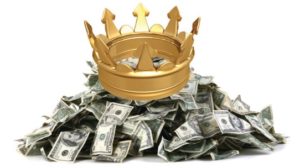Cash is king.  A company must have a positive cash flow to stay afloat. Particularly in an economic downturn, our clients struggle to maintain a positive cash flow when sales are down. Fortunately, there are several metrics that you can use to monitor and improve your cash flow.
A company must have a positive cash flow to stay afloat. Particularly in an economic downturn, our clients struggle to maintain a positive cash flow when sales are down. Fortunately, there are several metrics that you can use to monitor and improve your cash flow.
One of the conversations we’ve begun to hear lately is focused on which is better: DSO vs CEI.
Days Sales Outstanding (DSO)
Days Sales Outstanding (DSO) is a useful formula to measure the average age of accounts receivable. As a management tool, it can be used to track and improve collections as well as motivate employee performance.
DSO = (Accounts Receivable / Total Credit Sales) * 365
DSO is not a measurement of effectiveness, rather efficiency. For example, ABC Company has a DSO of 45 days. That means that it takes 45 days from the delivery of service to the delivery of payment. Let’s assume ABC Company sold 60% of their inventory with a DSO of 45 days, but their payments for the inventory are made in 30 days. See any problems? ABC Company doesn’t have cash to pay for its inventory because it’s tied up in receivables!
One problem with DSO is that it isn’t always smooth. Cyclical businesses like water parks or toy stores have their peaks (summer and winter, respectively) throughout the year. Their DSO is going to be different from the high compared to the low.
Another problem is while DSO is a good measure of the revenue-to-cash cycle, it’s not a good measure of collections efficiency. DSO is dependent upon credit terms, so if your terms are net 30, getting DSO below 30 is not likely to happen.
[box]Need some ideas on how to improve your cash flow? Download our free tip sheet 25 Ways to Improve Cash Flow.[/box]
Collection Effectiveness Index (CEI)
Collection Effectiveness Index (CEI) is used to track accounts receivable, much like DSO.
CEI = [(Beginning Receivables + Month’s Invoice Revenue – End Total Receivables) / (Beginning Receivables + Month’s Invoice Revenue – End Current Receivables)] * 100
The Credit Research Foundation developed CEI to give a more precise reflection of credit and collections performance for companies with fluctuating sales. It focuses on the effectiveness of collections efforts over time. CEI looks at collections relative to accounts that have come due and not the current receivables that are unlikely to be paid early.
The goal is for CEI to be close to 100%. This shows effective and efficient collections processes. Understanding and tracking CEI is important not only to monitor the creditworthiness of your customers, but to ensure adherence to established collections policies.
Purpose of Measuring CEI vs DSO: Collection Management
Now that we have the basics out of the way, what is the purpose of measuring CEI and/or DSO?
The shorter the DSO, the faster a company gets cash to fuel operations. The higher the CEI percentage is, the tighter the collections process is. Either way, it’s all about accounts receivable!
There are a couple of important reasons to measure CEI and DSO:
- to measure the effectiveness of collecting accounts receivable
- to improve cash flow
Should I change from DSO to CEI?

It depends. Many use DSO widely because it is easy to benchmark. It can be a powerful KPI, especially for businesses that don’t experience spikes or drops in sales.
CEI might be a better indicator for businesses that experience cyclical sales. Because it looks at collections efficiency over the period calculated, it doesn’t matter if sales are up or down for the period. It just measures how much of collectible sales were collected.
Why not use both?! DSO dips and spikes can alert you not only to collections issues, but sales issues as well. CEI helps you make sure that whatever your sales volume, cash is getting in the door as quickly as possible.
For other ways to improve your cash flow, download our FREE white paper with 25 ways to improve cash flow by clicking here or the image below.
[box]Strategic CFO Lab Member Extra
Access your Strategic Pricing Model Execution Plan in SCFO Lab. The step-by-step plan to set your prices to maximize profits.
Click here to access your Execution Plan. Not a Lab Member?
Click here to learn more about SCFO Labs[/box]
See also:
Examples of DSO










